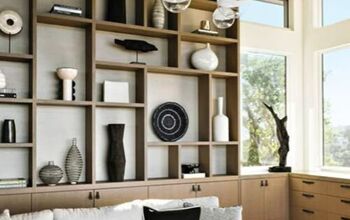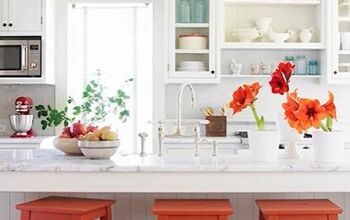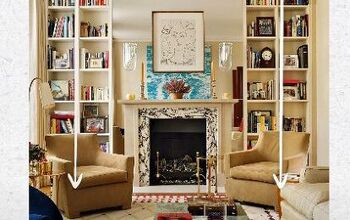10 Common Furniture Placement Mistakes & How to Fix Them

Does something feel "off" in your living room, but you're not sure why? It could be your furniture layout.
In this video, interior designer Rebecca Robeson continues her series on home design by addressing common furniture arrangement mistakes that many people make, often without realizing it.
By sharing examples and photos from her viewers, Rebecca offers practical advice on how to correct these errors to create more aesthetically pleasing and functional spaces. What I love about this video and Rebecca's series is seeing the real-life examples of people's living rooms and how small (and free!) changes like rearranging furniture can change everything!
Here's the video and a summary of the 10 mistake examples below:
Table of contents
Furniture Placement Issues
One of the most frequent mistakes Rebecca identifies is improper furniture placement. Many people tend to push their furniture against the walls, which can make a room feel uninviting and overly spacious.
Rebecca suggests floating furniture away from the walls to create more intimate and conversational areas.
She also points out the importance of not arranging all furniture to face the television, as this limits the functionality and social potential of the space.
1. Long, Narrow Room
Rebecca discusses Melissa’s living room, which is long, narrow, and has very high ceilings. The furniture is lined up against the walls, which makes the room feel like a bowling alley. Rebecca suggests rearranging the chairs to create a U-shaped or L-shaped conversation area. This approach would fill the space more effectively and make the room feel more balanced and inviting.
2. Under-Furnished Room
Oscar and Suzanne have a large room with beautiful built-ins and paneling, but it feels underwhelming due to a lack of sufficient furniture. Rebecca recommends adding a sectional sofa and additional chairs to better utilize the space and connect the architectural elements with the furniture. This would prevent the room from feeling sparse and make it more welcoming.
3. Spacious Living Room
Francesca’s living room is large, but her furniture is pushed against the walls, which diminishes the room’s potential. Rebecca advises moving the furniture closer to the center of the room, floating it away from the walls, and adding a coffee table. This arrangement would create a more luxurious and cohesive space.
4. Symmetry Challenge
Carla’s room features beautiful furniture, but the placement is off, particularly with her sofa not centered under a window. Rebecca suggests moving the sofa to align it with the window, adding window treatments, and choosing a larger coffee table that is appropriately distanced from the sofa. This would enhance the room’s symmetry and functionality.
5. Off-Centered Sofa
Maureen’s living room has a sofa that isn’t centered under the window, which throws off the room’s balance. Rebecca recommends repositioning the sofa to center it with the window, adding window treatments, and replacing curved furniture pieces with something more fitting. This adjustment would create a focal point and improve the room’s overall harmony.
6. Over-Furnished Room
Meena’s living room has three sofas and a cluttered feel due to off-centered art and furniture. Rebecca suggests moving the furniture to better align with the room’s center, repositioning the art and mirror, and ensuring that the room feels more cohesive and balanced. Proper placement can significantly improve the room’s aesthetic.
7. Grand Room
Kris has a large room with tall windows, but the small furniture pieces don’t do justice to the space. Rebecca advises adding tall furniture pieces on either side of the window to create a grander effect. By choosing furniture that matches the height and style of the room’s architecture, Kris can create a more impactful and visually appealing space.
8. Overwhelming Room
Barbara’s room has too much furniture, which overwhelms the space. Rebecca suggests focusing on the room’s focal point—the fireplace—and arranging the furniture to create a U-shaped conversation area around it. This would make the room more functional and visually appealing, highlighting its best features.
9. Entry Wall Dilemma
Donna’s entry wall is underutilized with a small, open sofa table. Rebecca recommends replacing it with a more substantial cabinet, centering it on the wall, and adding a piece of art above it. This change would create a more impactful entryway and enhance the room’s overall decor.
10. Hotel Room Furniture Arrangement
Rebecca concludes by demonstrating how small adjustments can make a big difference in a room’s layout. Using a hotel room as an example, she shows how moving furniture closer together and balancing the placement can improve comfort and functionality. This example illustrates the importance of thoughtful furniture arrangement in any space.
What do you think of Rebecca's advice? I found these suggestions really useful.
Please let me know in the comments if you've ever rearranged your living room and whether it made a difference or not.























Comments
Join the conversation